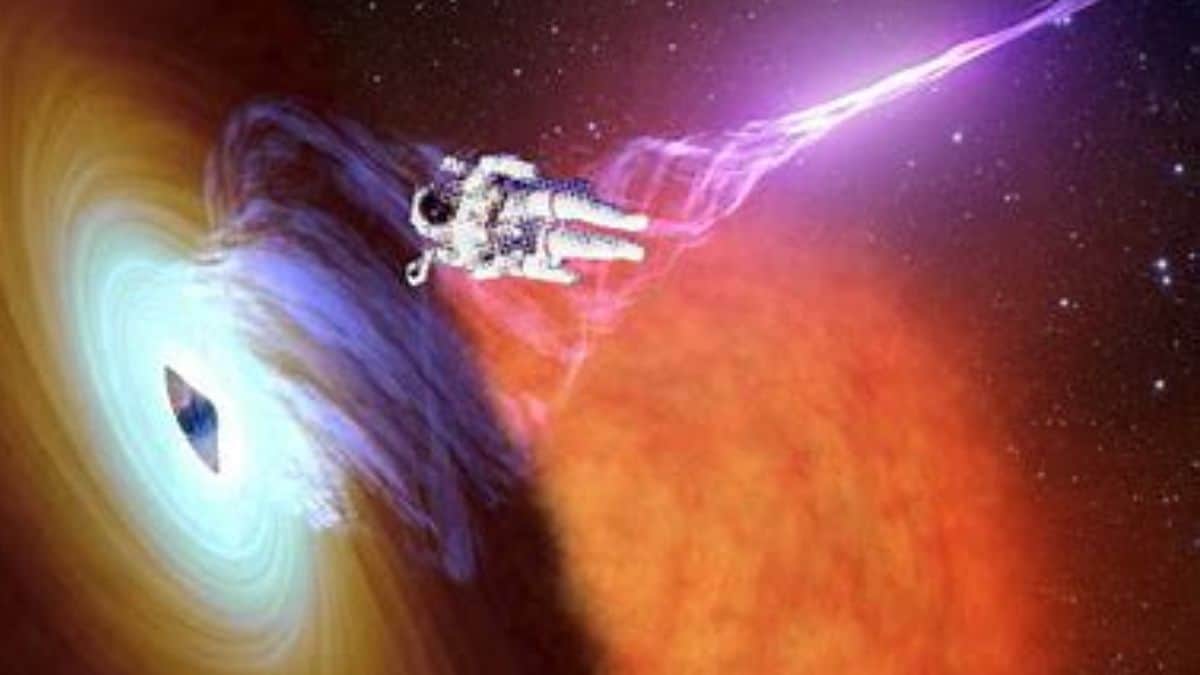What will happen if you enter inside a Black Hole?

What is a Black Hole?
To fully appreciate why you can’t just swan dive or maneuver your spacecraft into a black hole, you must first understand the basic properties of these gravitational behemoths. A black hole is just a place with such strong gravity that nothing, not even light, can escape.
Black holes are aptly named since they typically don’t reflect or emit light. Only when they are consuming stars or gas clouds that wander too far from their event horizon or border, are they visible? A singularity is a very small location that lies beyond the event horizon and has such a powerful gravitational field that space-time is infinitely warped there. At this moment, the laws of physics as they currently stand disintegrate, rendering any theories about what lays mere supposition.
Types of Black Holes
Depending on variables like whether or not they spin or have an electrical charge, black holes can be represented at different levels of complexity. The kind of black hole you enter will therefore determine your exact fate.
At the most basic level, black holes can be divided into three groups: stellar-mass black holes, supermassive black holes, and intermediate-mass black holes.
When extremely huge stars exhaust their fuel and collapse in on themselves, stellar-mass black holes are created. Supermassive black holes are thought to grow to such extreme masses, up to tens of billions of times more massive than our Sun, by eating stars and merging with other black holes. They are found in the centers of most galaxies. Even though there are still few known examples of intermediate-mass black holes, astronomers believe they may emerge by a smaller-scale version of the same accretion process.
Despite appearing little in comparison to their larger cousins, stellar-mass black holes have more powerful tidal forces just beyond their event horizons. This distinction is made possible by a characteristic of black holes that might startle some casual viewers. Compared to supermassive black holes, smaller black holes actually exhibit a more pronounced gravitational gradient. To put it another way, the difference in gravity is very obvious even after a very brief fall.
Black hole spaghetti
If you were free-floating in space close to a stellar-mass black hole, the only sign that one existed may be the gravitational amplification, or “lensing,” effect it might have on neighboring background stars.
Known as spaghettification by scientists. This is due to the fact that the gravity of the black hole compresses your body horizontally while tugging it vertically like taffy. The gravitational pull on your toes would be significantly stronger than that on your head if you dove into the black hole feet first. Additionally, every part of your body would lengthen somewhat in a different direction. In fact, you would resemble a piece of spaghetti.
Therefore, you probably wouldn’t be overly concerned with the existential puzzles you might be able to solve after passing through “the other side” as you sank into a stellar-mass black hole. Before you reached the singularity, hundreds of kilometers away, you would be as dead as a spaghetti-shaped doornail.
Furthermore, there are other factors at play in this hypothetical scenario. Many satellite telescopes photographed what astronomers eventually named a “tidal disruption event” in 2014 when a star got too close to a black hole. Some of the material fell beyond the event horizon as a result of the star’s stretching and tearing, while the remainder was hurled back out into space.
What happens if you fall into a Black hole?
Supermassive or intermediate-mass black holes would be less terrible for you to enter than stellar-mass black holes. Even if a dreadful death would still be your fate, in the end, you might manage to go all the way to the event horizon and begin falling inside the singularity while still alive.
In this case, you may conceivably have a peek at the neighborhood. But as soon as you went beyond the event horizon, nobody could see you. Even if you tried to beam a flashlight out from your palm, you would still fall back into the singularity.
This occurrence is known to astronomers as gravitational lensing. You would notice that everything within the event horizon was being bent by powerful gravitational forces in the interim. (Excluding the odd time-dilation effects.)
Of course, the powerful gravity will eventually rip you apart in whatever black hole you fall into. Nothing, especially soft people, could remain intact. Therefore, once you pass the event horizon, your adventure is finished. There is no escape. You would still need to escape by traveling faster than the speed of light even if you were still alive. However, nothing in the universe can achieve that as far as we are aware.
Since nothing, not even information can transcend the event horizon, we will never be able to know for sure what happens when matter reaches the point of no return. Even if you had the chance to plunge over a cosmic precipice into a black hole, you should definitely resist the urge out of caution.


